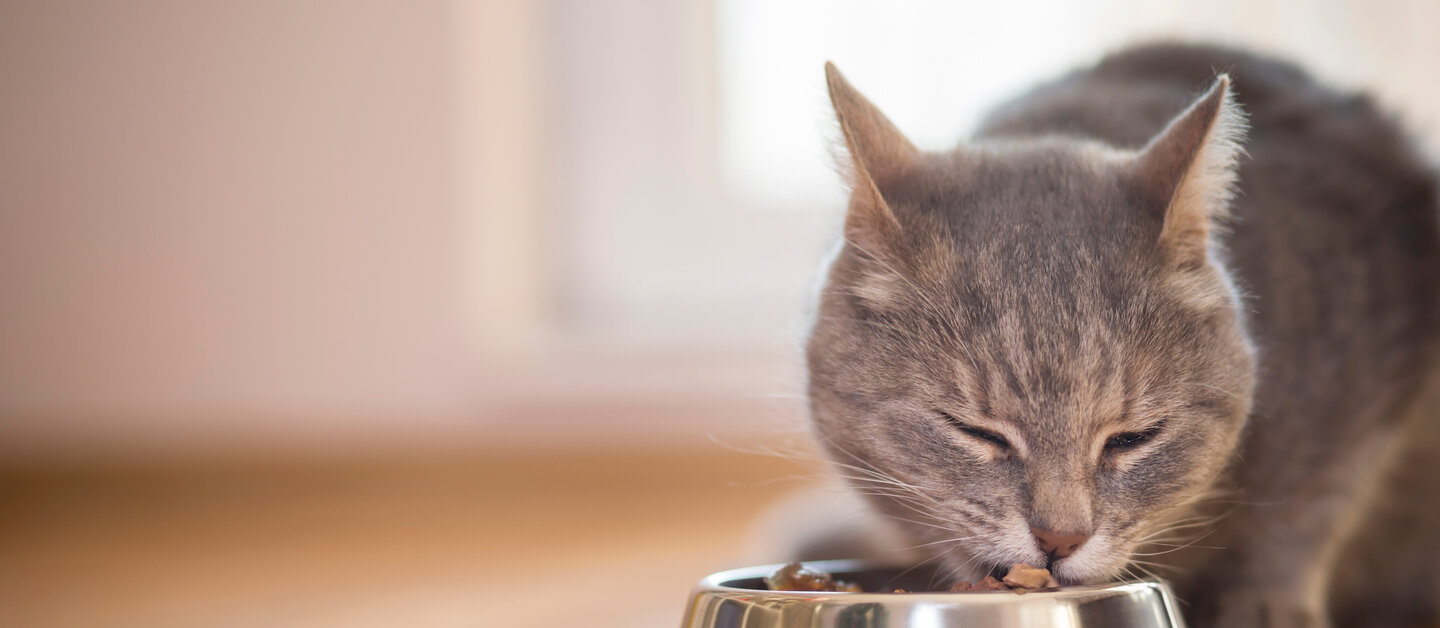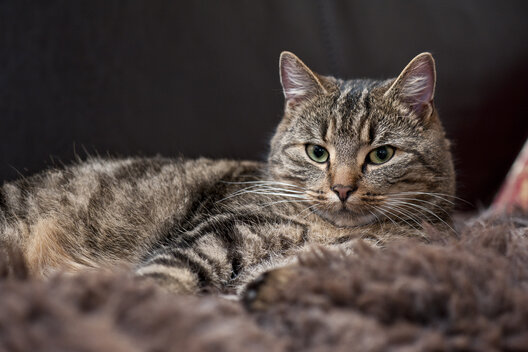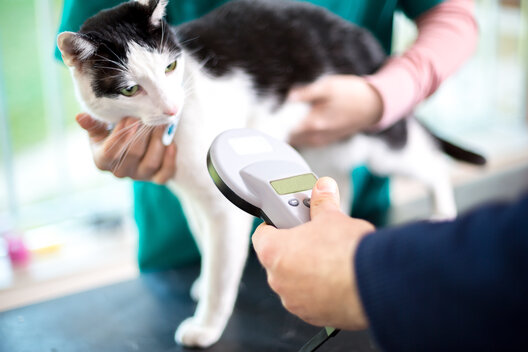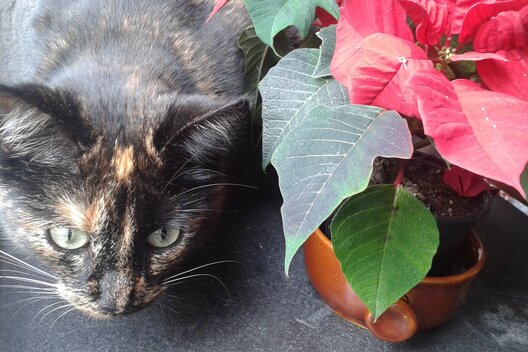Sophisticated choice of cat foodFeeding cats: How to feed correctly
For a healthy cat's life, it is important that cats are fed according to their species and needs and that the right cat food is chosen . We show you how to feed cats so that they get all the nutrients they need.
Feeding cats with high-quality food
As prey eaters, cats primarily need animal protein and fat as a source of energy, as well as certain vitamins and minerals. Cats only need small amounts of carbohydrates. You should adapt the cat food to the natural needs of the animals. It should be of high quality and consist of selected raw materials. To prevent deficiency symptoms or overfeeding, it is best to use a so-called complete food. Look out for this label when buying. Its composition is tailored to the cat's daily energy and nutrient requirements.
Important: You should be extremely sparing with treats. They are often high in calories and can lead to obesity. Weigh your cat regularly and consult your vet to identify and prevent obesity.
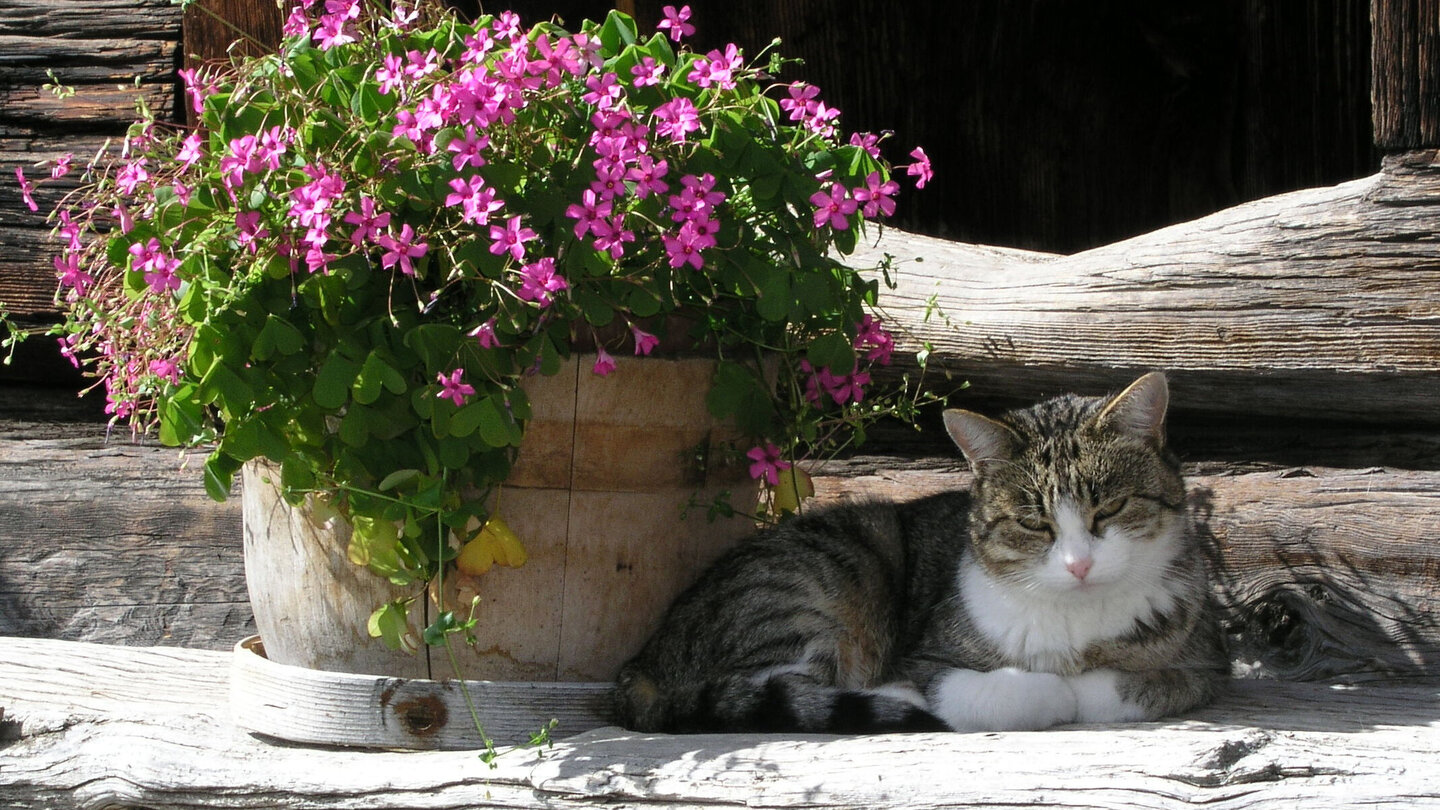
Feed many small meals per day
To cover their daily requirements, cats naturally catch up to 15 mice a day. This is why the stomach of domestic cats is designed for several small meals a day . You can offer your cat food throughout the day if it does not tend to be overweight. This works particularly well with dry food. Wet food should not be left out for too long. The rations should always be divided into as many small portions as possible per day (at least 5 portions).
Playing with food (e.g. using fumble boards, food puzzles, food balls, hiding/throwing food, clicker training) is a good way of accommodating the cat's natural eating behavior and keeping the animals mentally occupied at the same time.
When giving dry food, it is essential to pay attention to additional water intake. If the cat likes to eat wet food, it makes sense to feed at least part of the ration in the form of wet food.
The following formula is a simple guide to how much food a healthy adult cat needs each day: 1.4 x (body weight in kg x 30) + 70. The result is the calorie count. For a cat weighing two kilograms, for example, this means that it needs 154 kilocalories per day.
Sufficient fluids
Cats that only eat wet food can usually meet their daily fluid requirements through their food intake alone. Cats that eat dry food must also drink.
However, it is not always easy to encourage cats to drink enough water. You can encourage them to do so with a drinking fountain, for example, or by placing several water bowls around the home. It should be noted that drinking fountains must be regularly dismantled and cleaned. We recommend offering at least part of the ration as wet food every day,1 which already provides them with valuable liquid. This prevents urinary tract problems. However, they do not tolerate cow's milk well. It does not replace water, but counts as food.
It is possible to cook cat food yourself
If you want to prepare your pet's food yourself, you should allow plenty of time for this. It is important to read up on the subject and seek veterinary advice. Vets who specialize in nutrition will draw up a scientific ration plan and adjust it regularly. Without professional support, there is a risk that the ingredients will be selected incorrectly or unbalanced. This can quickly lead to a nutrient deficiency or excess, which is usually not noticed until it is too late. This can lead to growth disorders, especially in growing animals.
SPECIAL FOOD FOR KITTENS AND SICK CATS
In order to be able to offer sick animals, pregnant or nursing cats and their kittens the optimum food for their individual needs, you should consult a vet. With kittens in particular, it is important to know that kittens get used to special cat food in the first few months of their lives. It can then happen that they no longer accept any other food later on. You should be aware of this so-called food imprinting right from the start. It therefore makes sense to offer young cats as many different foods as possible (wet food, dry food, different manufacturers and flavours, home-cooked food).
What you should avoid when feeding cats
As pure carnivores, a vegan diet is by no means suitable for cats. With purely plant-based food, the animals lack certain nutrients that they need for the growth of bones and muscles or their eyesight.2
Make sure there is enough space between the feeding area, water bowl and litter tray. If the two are right next to each other, the cat may refuse to eat. Or, conversely, it may ignore the toilet and relieve itself somewhere else. It is also best to put the drinking water in a third place.
Cat food should be at room temperature. If it is too hot or comes straight from the fridge, it can cause digestive problems.
Raw meat is not suitable for cats. Otherwise there is a risk of infection for animals and humans. Raw pork, for example, can in the worst case contain dangerous Aujeszky's disease pathogens. This disease, which is similar to rabies, leads to death in cats within a short time.
Seasoned leftovers are unsuitable for cats as they are often too strongly seasoned and do not contain the nutrients your feline friend needs.
Cats should not eat bones, as they can seriously injure themselves and become constipated.
Cow's milk is taboo for cats as it contains too much lactose, which adult animals cannot digest properly. You can offer your cat lactose-free cat milk as a treat.
Sources and further information
1 Fritz J, Handl S. Wasserbedarf und Trinkverhalten Der Katze. Veterinary Focus 2018; 28(03): 32 - 40. doi:10.1055/s-0035-1570621
2 Further information on a vegetarian or vegan diet for dogs and cats from an animal welfare perspective. (available in German only)

